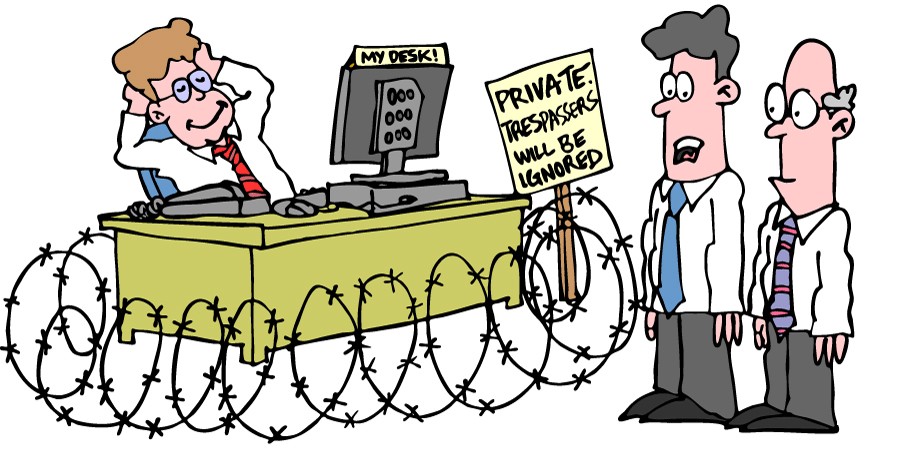

Dear all,
Hot desking must surely be one of the most odious office organisation systems created in the 20th century.
Hot desking (for those of you lucky enough to be unfamiliar with it) is an office system based on the principle that it is cheaper to have multiple workers use the same work station, than to provide fixed desks for staff. This system is now used not just in offices where staff are on shifts and so not all in the office at the same time, but also in offices where there is no shift working.
What this means in practice is that staffers do not have a personal desk and they arrive at work not knowing where they will log in on the day.
The theory is that this workspace sharing model can help to considerably reduce costs and thus save businesses a lot of money; however I have, after the experience of working in a hot desking environment for over a decade, concluded that this is a false economy.
Hot desking incurs its own costs. For example, it requires more frequent technical support as often your profile and programmes can be affected by those of the person who used that machine before you. This happens repeatedly, and requires constant support from the tech team who resolve it. My experience is that every day at least one hour of work time is thus wasted, obviously making staffers less productive.
There is a psychological cost too: often staffers will have less of a sense of belonging and ownership as regards the workplace. This is the result of having to arrive on the day and scramble for a desk, a process which turns colleagues into rivals as they compete for prized locations. Morale is affected too: staffers are made to feel like day hires or ‘temps’, the implication being that they are dispensable.
Hot desking can also severely affect team spirit because it makes the physical surroundings so very impersonal and so inconsistent in terms of seating.
There is also a lack of clarity in the way office space is typically used with this model. You walk into a team space and there is no physical indicator as to who does what: there are simply rows of desks. There are no visual clues as to what anybody’s role might be.
So what is the true cost of hot desking in terms of productivity and morale? No doubt some social scientist or office management expert somewhere in the world is trying to assess this and perhaps their findings will move organisations away from this model this is, quite simply, a system that is unfriendly and impersonal.
Best wishes